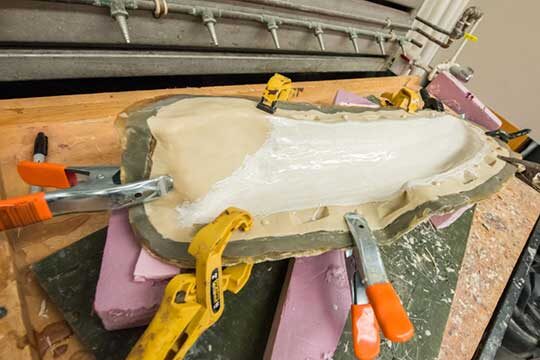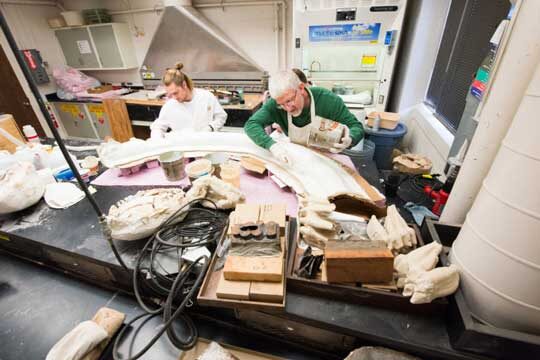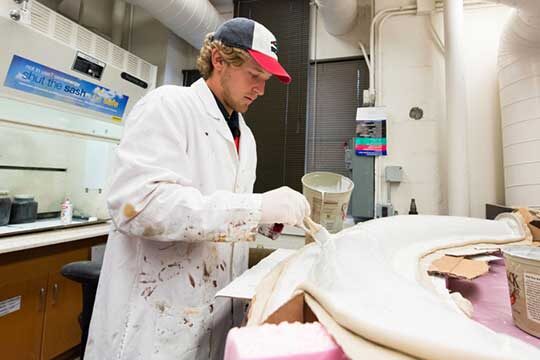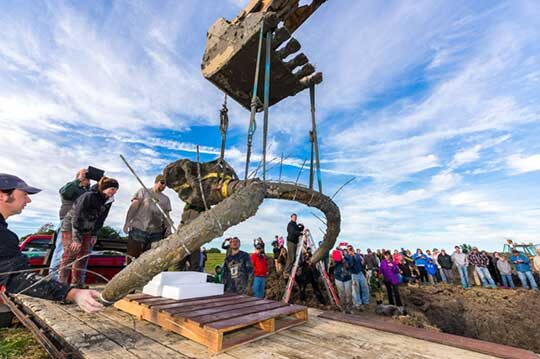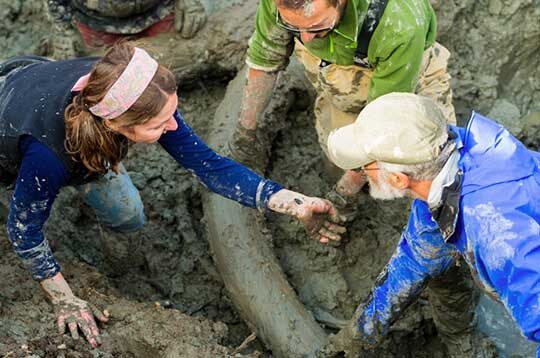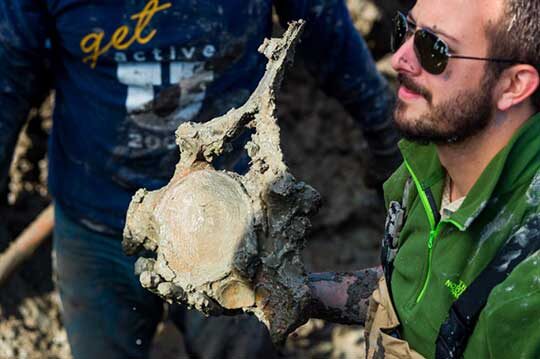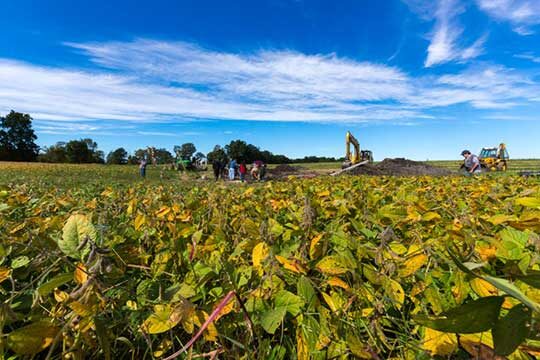Such lovely bones
You watched as U-M paleontologists excavated the bones of the prehistoric Bristle Mammoth from a farm near Chelsea, Mich. Now step into the lab to see how scientists are putting the giant pieces back together. The remains of the ice age mammoth are on exhibit through Jan. 15, 2017, at U-M’s Museum of Natural History. Read more. (Images by Michigan Photography.)
-
Tips of the trade
One half of the mold of the tip of the left tusk of the Bristle Mammoth. Researchers painted polyester resin onto the surface of the mold, then combined it with the other half to yield a cast of the tip of this tusk.
-
Breaking the mold
Lang DeLancey (left) and Bill Sanders apply polyurethane molding compound to produce a mold that will be used to make a fiberglass cast of one of the tusks.
-
Brushing up
U-M undergraduate Lang DeLancey brushes polyester resin onto a segment of the mold of one part of the left tusk of the Bristle Mammoth. The casts produced in this way were then assembled to make fiberglass copies of the tusks.
-
Cast party
U-M College of Engineering undergraduate Luke Stull brushes polyurethane molding compound onto the base of the left tusk of the Bristle Mammoth. Researchers used the mold to make a fiberglass cast of the tusk that is now on display at the U-M Museum of Natural History.
-
Time of death
Researchers cut a block from the base of the right tusk. This sample will be used to determine the animal’s season of death.
-
Filler
A scientist fills the cracks in one of the mammoth tusks using epoxy.
-
To the core
Closeup of the bone core, from which a smaller block was cut for radiocarbon dating.
-
Sampler
Paleontologist Dan Fisher uses a drill with a coring bit to extract a wine cork-size bone sample from one of the mammoth’s shoulder blades. The sample was sent to an independent laboratory for radiocarbon dating.
-
Identity crisis
Paleontologist Dan Fisher works in the classroom to identify the ancient bones.
-
Tusk!
Mammoth skull and tusks hoisted from the excavation pit at the Bristle farm, near Chelsea, on Oct. 1, 2015.
-
Sticks and stones
Former U-M archaeology graduate student Ashley Lemke, PhD ‘16 (left), with U-M paleontologists Daniel Fisher (right) and Joe El-Adli (center), inspects a fragment of stone found while uncovering one of the mammoth tusks in the muddy excavation pit.
-
Back to work
U-M PhD candidate Joe El-Adli holds a mammoth vertebra recovered during the dig.
-
Down on the farm
James Bristle’s farm near Chelsea on Oct. 1, 2015, the date of the U-M-led mammoth dig.

